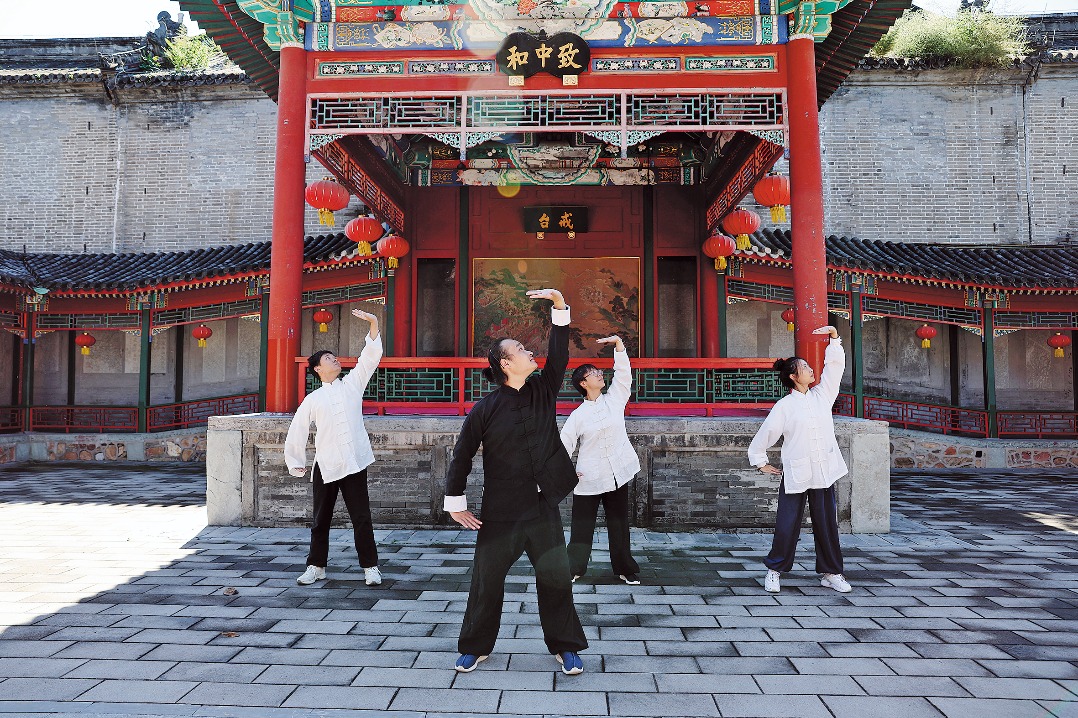China's Green Development in the New Era
CHINA DAILY | Updated: 2023-01-20 07:33

Editor's Note: China's State Council Information Office on Thursday released a white paper titled "China's Green Development in the New Era." Full text below:
Contents
Preface
I. Staying Firmly Committed to Green Development
II. A Basic Green Territorial Configuration Is in Place
III. Adjusting and Improving the Industrial Structure
IV. Extensive Application of Green Production Methods
V. Eco-Friendly Living Becomes the Prevailing Ethos
VI. Improving the Institutions and Mechanisms for Green Development
VII. Building the Earth into a Beautiful Home
Conclusion
Preface
Green is the color of nature and the symbol of life. A sound eco-environment is the basic foundation for a better life, and the common aspiration of the people. Green development is development that follows the laws of nature to promote harmonious coexistence between humanity and nature, development that obtains the maximum social and economic benefits at minimum cost in resources and environmental impact, and sustainable and high-quality development that protects the eco-environment. It has become the goal of all countries.
Respecting and protecting nature has made an important contribution to the survival and prosperity of the Chinese nation over thousands of years.The concept of "harmony between humanity and nature" is a distinct characteristic of Chinese civilization. To vigorously promote the building of a socialist eco-civilization, China has established a fundamental national policy of conserving resources and protecting the environment, and a national strategy of sustainable development since the launch of reform and opening up.
Since the 18th CPC National Congress in 2012, under the guidance of Xi Jinping Thought on Socialism with Chinese Characteristics for a New Era, China has firmly upheld the belief that lucid waters and lush mountains are invaluable assets. It has prioritized eco-environmental conservation and green development, promoted the comprehensive green transformation of economic and social development, and achieved modernization based on harmony between humanity and nature. Wonders have been accomplished in eco-environmental protection and green development, and great strides have been made in building a beautiful China. Green is the defining feature of China in the new era and green development features the Chinese path to modernization. With more blue skies, green mountains, and lucid waters, the Chinese people could enjoy more accessible and sustainable green benefits. China's green development has helped to expand the greening areas of its own land and the earth, benefitting both China and the world at large.
As the world's largest developing country, China is committed to the idea of a global community of shared future. It has offered unwavering support to multilateralism, proposed the Global Development Initiative and the Global Security Initiative, expanded practical cooperation, and actively participated in global environment and climate governance. It has contributed Chinese wisdom and strength to implementing the UN 2030 Agenda for Sustainable Development, creating a community of life for humanity and nature, and building a clean, beautiful and prosperous world of sustainable development.
The Chinese government is publishing this white paper to present a full picture of China's ideas, actions, and achievements in green development in the new era, and to share with the world its experience in this regard.
I. Staying Firmly Committed to Green Development
To meet the people's desire for a better life, China has treated lucid waters and lush mountains as invaluable assets and worked to maintain harmony between humanity and nature in its development. China favors high-quality economic growth, high-level environmental protection, and a path of sound development based on higher economic output and living standards, and healthy ecosystems.
1. Applying a people-centered development philosophy
The people-centered philosophy is a governing principle of the Communist Party of China (CPC), and a sound eco-environment is the fairest public product and the most inclusive public benefit. As China's modernization advances and living standards improve, the popular demand for a beautiful environment is growing. In the people's happiness index, the weight of environment has increased. To meet the growing demand for a beautiful environment, China has strengthened eco-environmental conservation and protection and vigorously promoted eco-friendly ways of work and life. It has focused on solving the major environmental problems that seriously endanger people's health, improved the quality of the environment and ecosystems, and provided more quality eco-environmental goods, so as to help people feel happier, more satisfied, and more secure in a beautiful environment.
2. Focusing on sustainable development in China
Society will prosper when the environment improves, and lose vigor as the environment degrades. Nature provides the basic conditions for human survival and development. Respecting, accommodating, and protecting nature is essential for sustainable development. Bearing in mind that its environmental capacity is limited and its ecosystem is fragile, China has not only pursued development for the present generation, but also mapped out plans for generations to come. It regards eco-environmental conservation as fundamental to sustainable development in China. It values both the environment and economic development, works to translate eco-environmental strengths into development strengths, and always looks to realize the economic and social value that lucid waters and lush mountains have, which will bring about financial returns, eco-environmental benefits, social benefits, and harmony between humanity and nature.
3. Applying systems thinking and a coordinated approach
Green development is an all-round revolutionary change in our values, and in how we work, live, and think. China has applied systems thinking to the whole process of economic and social development and eco-environmental conservation and protection. It has taken a sound approach to the relationships between development and protection, between overall and local interests, and between the present and the future. It has taken a scientific, moderate, and orderly approach to the use of territorial space, and promoted a sound economic structure that facilitates green, low-carbon, and circular development. It has fostered an institutional system that combines both constraints and incentives to coordinate industrial restructuring, pollution control, eco-environmental conservation, and climate response. China has endeavored to cut carbon emissions, reduce pollution, expand green development, and pursue economic growth. It has prioritized eco-environmental protection, conserves resources and uses them efficiently for green and low-carbon development. It has developed spatial configurations, industrial structures, and ways of work and life that help conserve resources and protect the environment, and promoted greener economic and social development in all respects.
4. Working together for global sustainable development
Protecting the environment and countering climate change are the common responsibilities of all countries. Only when all countries unite and work together to promote green and sustainable development can we maintain the overall balance in the earth's ecology and protect humanity's one and only home. China has shouldered its responsibilities, actively participated in global environmental governance, and pledged to reach carbon emissions peak by 2030 and carbon neutrality by 2060. It will advance the green transition with these goals as the lead, play a more active part in bilateral and multilateral international cooperation on green development, promote a fair and equitable system of global environmental governance, and contribute its wisdom and strength to global sustainable development.
Panel 1 Policies and Actions on Carbon Emissions Peaking and Carbon Neutrality
The "1+N" policy framework for carbon emissions peaking and carbon neutrality:
The "1+N" policy framework comprises of two top-level design documents, i.e., the Working Guidance for Carbon Dioxide Peaking and Carbon Neutrality in Full and Faithful Implementation of the New Development Philosophy, the Action Plan for Carbon Dioxide Peaking Before 2030, and the action plans to achieve carbon emissions peak in key areas and sectors such as energy, industry, transport, urban and rural construction, iron & steel, non-ferrous metals, and cement, plus the support measures in technology, finance, standards, and talent development.
Ten major actions for carbon emissions peaking:
In accordance with the Action Plan for Carbon Dioxide Peaking Before 2030, China will take 10 actions:
• for green and low-carbon energy transition;
• for energy saving, carbon emissions reduction, and efficiency improvement;
• for carbon emissions peaking in industry;
• for carbon emissions peaking in urban and rural development;
• for promoting green and low-carbon transport;
• for facilitating carbon emissions reduction through the circular economy;
• for encouraging innovation in green and low-carbon technology;
• for consolidating and improving carbon sink capacity;
• for advocating a green and low-carbon lifestyle nationwide;
• for reaching carbon emissions peak by different regions in a structured and orderly manner.
























